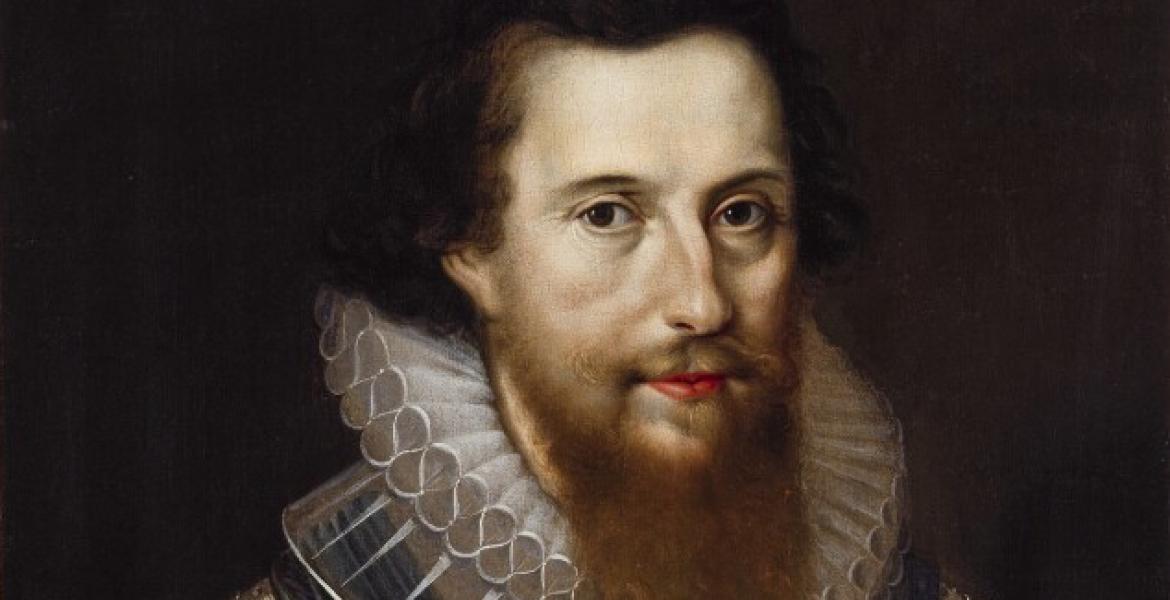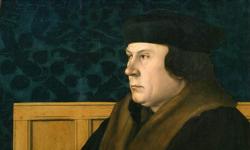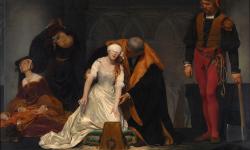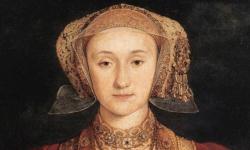The Essex Rising
Key facts about the Essex Rising
- The earl of Essex had been a favourite of Queen Elizabeth I until he fell from favour in 1599.
- He became desperate for a return to favour, partially because of his financial position, and thought that his lack of success was down to enemies at court.
- He was forced into a corner and had to act before plans were fully formed, on 8 February 1601.
- Essex and his followers devised a means to access the queen, by encouraging London to rise in his support.
- London did not rise and Essex was declared a traitor.
- The Rising finished on the day it started, with Essex and many of his followers taken prisoner.
- Essex and four others were executed for treason.
People you need to know
- Charles Blount, Lord Mountjoy - follower and friend of Essex; acknowledged lover of Essex's married sister Penelope, Lady Rich; Essex's replacement as 'viceroyA ruler exercising authority in a colony on behalf of a sovereign.A ruler exercising authority in a colony on behalf of a sovereign. ' in Ireland.
- Sir Christopher Blount - soldier and stepfather to Essex; distant cousin of Charles Blount.
- Robert Catesby - committed Catholic, follower of Essex, and leader of the Gunpowder Plot.
- Sir Robert Cecil - younger son of Elizabeth I's foremost politician, Lord Burghley (d. 1598), and Secretary of State for England.
- Thomas Cecil, Lord Burghley - courtier and soldier, and elder brother of Robert Cecil.
- Robert Devereux, earl of Essex - warrior and former favourite of Elizabeth I who by 1601 was desperate and almost broke.
- Robert Dudley, earl of Leicester - favourite of Elizabeth I until his death in 1588; stepfather to Essex.
- Sir Thomas Egerton - Lord Keeper (an officer of the state, who was tasked with looking after the Great SealA seal used for the authentication of state documents of the highest importance.A seal used for the authentication of state documents of the highest importance. ), and former helpful gaoler of Essex when the earl had been held under house arrest.
- Elizabeth I - queen of England, who ruled from 1558 until 1603.
- Thomas Grey, Lord Grey of Wilton - soldier, courtier, and generally not well liked; determined enemy of Southampton. In 1603 he was imprisoned for his involvement in a plot against James I.
- Sir Ferdinando Gorges - warrior, kinsman of Ralegh, and follower of Essex.
- James VI and I - king of Scotland from 1576; he was the most likely candidate to succeed the childless Elizabeth I of England, and became king of England in 1603.
- Sir William Knollys - courtier, privy councillor, and uncle of Essex.
- Sir John Leveson - warrior and administrator.
- William Parker, Lord Mounteagle - prominent Catholic, follower of Essex, and later famous as the discoverer of the Gunpowder Plot.
- Sir John Popham - Lord Chief Justice, politician and lawyer.
- Sir Walter Ralegh - courtier, explorer, and sometimes-rival to Essex for Elizabeth's favour; captain of the guard in 1601. Executed in 1618 for his alleged involvement in a plot against James I in 1603.
- Thomas Smythe - merchant (and first governor of the East India Trading Company) and sheriff of London.
- Edward Somerset, earl of Worcester - courtier and friend of Essex.
- Francis Tresham - committed Catholic, follower of Essex, and reluctant Gunpowder Plotter. He may have been the author of the letter that alerted Mounteagle, and therefore the state, to the existence of the Plot.
- Henry Wriothesley, earl of Southampton - courtier and close friend of Essex. He had fallen from Elizabeth's favour by secretly marrying one of the queen's maids of honour.
On Sunday 8 February 1601 a group of armed men, perhaps 300 strong and led by the petulant earl of Essex, marched through London. Their aim was to raise the City to storm the queen’s palace at Whitehall, and force her to abandon her policies and the councillors who supported them. They wanted to call a parliament, enact ‘justice’ against their enemies, announce the elderly queen’s heir, and pursue the bloody path of war against Spain. But their attempted coupA sudden, and often violent, illegal seizure of power from a government.A sudden, and often violent, illegal seizure of power from a government.A sudden, and often violent, illegal seizure of power from a government. failed: London would not rise, the plotters had no leverage, and the court was forewarned. The last ‘great’ noble revolt against the crown and its advisers fizzled to an inglorious end, its perpetrators fined, imprisoned, or executed.
Essex, a wayward favourite
Essex and Elizabeth’s relationship had often been tempestuous: they both had strong personalities, they both demanded respect and admiration, and they both saw the world in different ways. Elizabeth had always had favourites, men she liked to keep near her to entertain or advise her. Yet she expected them to be obedient and to compromise, and for most of her reign, this is exactly what they did. But Essex was of a new generation. As the protégé and stepson of Robert Dudley, the man whom rumours romantically linked to Elizabeth, Essex had witnessed the blessings heaped on a man basking in Elizabeth’s favour and naturally sought to replicate it. He expected the same amount of latitude for the same mistakes as Dudley, and wanted immediate promotion to favour and greatness, without the advantage – and proof – of decades of service. But he was not Dudley. Although he was charming and charismatic, and could show flashes of military genius, he was also often impatient and prone to melodrama. He sought to use his popularity with the people as leverage in arguments, and would sulk for months if he didn’t get his own way. In 1598 he had almost drawn his sword on the queen in response to her boxing his ears for turning away from her. In 1599, after outmanoeuvring the competition, he had gone to Ireland to subdue a rebellion, achieved little, had a secret meeting with the rebels’ leader and then, directly defying the queen’s orders, returned to England and stormed into her chambers before she was dressed.
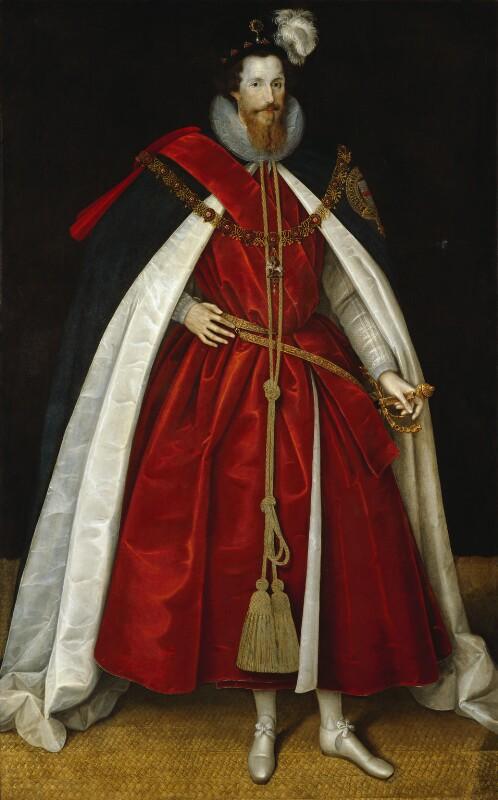
It was this last act of supreme disobedience that proved his political downfall. Placed under house arrest, he was reprimanded by the queen and his peers, and, worst of all, lost his right to the sweet wines tax farm. Egged on by his followers, wallowing in self-pity and worrying about his now ever-mounting debts, he came to believe that all of his problems stemmed from a group of evil men close to the queen. It was these men – Robert Cecil and Walter Ralegh among others – who had poisoned the queen’s mind against him and plotted the overthrow of the protestantSomeone following the western non-Catholic Christian belief systems inspired by the Protestant Reformation.Someone following the western non-Catholic Christian belief systems inspired by the Protestant Reformation.Someone following the western non-Catholic Christian belief systems inspired by the ProtestantSomeone following the western non-Catholic Christian belief systems inspired by the Protestant Reformation. Reformation. claim to the succession of England for their own nefarious ends. His own fate and that of country became linked in his mind. The only way to save both of them was, effectively, to take the queen into protective custody.
Plans, if they could be called such, came together slowly. The previous year Essex had asked his replacement in Ireland (and his sister’s lover), Charles Blount, Lord Mountjoy, to send the army in Ireland against the English court, and had sent feelers to James VI of Scotland requesting support. These came to nothing: Mountjoy, seeing his friend in no immediate danger, made the sensible decision to advise Essex to be patient and allow time to heal the rift. James, although he had been in secret contact with Essex for several years, vacillated to the point where he was no help whatsoever. So, new plans were formed. Essex’s followers – disgruntled and frustrated courtiers and soldiers, men nearing bankruptcy, and a strange mix of puritans and Catholics (including many who would later become Gunpowder Plotters) – started gathering in numbers at Essex House, and in early February 1601 an inner core met at Drury House in London to discuss options. Despite one member coming up with a feasible strategy – taking the palace at Whitehall, assigning places for key individuals, and listing suitable alternatives for the privy councilA monarch's private advisers.A monarchA king, queen, or emperor's private advisers.A monarchA king, queen, or emperor's private advisers. – the plans remained hazy and undecided. Should they first go to London, or to the Tower? Should Essex flee to France? Could Mountjoy scheme from Ireland? By the evening of 7 February, despite seeking inspiration in watching the Lord Chamberlain’s Men portray the deposition of Richard II, no further progress had been made.
The Rising
The amassing of men at Essex House did not go unnoticed by the government. On the evening of 7 February, Essex received a summons to attend the privy council, which he ignored. He said he feared for his life and expected to be seized on charges of treason, constructed by enemies in the council, if he obeyed. It was taken as nothing short of an ultimatumA final, uncompromising demand or set of terms, the rejection of which could lead to a severance of relations or to the use of force.A final, uncompromising demand or set of terms, the rejection of which could lead to a severance of relations or to the use of force.A final, uncompromising demand or set of terms, the rejection of which could lead to a severance of relations or to the use of force.: Essex would have to act or face the consequences unprotected.
The following morning, Sir Walter Ralegh, captain of the guard, was rowed down the Thames to reason with his Essexian kinsman, Sir Ferdinando Gorges. When they met in the middle of the river, Gorges warned Ralegh that ‘Essex had put himself into a strong guard at Essex house, and this is like to be the bloodiest day’s work that ever was’. Ralegh urged Gorges to flee, but his kinsman loyally refused and instead advised Ralegh to make himself safe.  Thomas Bayley Howell (ed.), Cobbett’s complete collection of state trials and proceedings for high treason and other crimes and misdemeanoursMinor wrongdoings.Minor wrongdoings. Minor wrongdoings. …, 33 vols (London: T.C. Hansard, 1809–26), vol. I (1809), p. 1344. Having come to an impasse, and with the odd follower of Essex making threatening moves from the bank of the river, they parted. Gorges returned to the House and Ralegh to the court, with a warning on his tongue.
Thomas Bayley Howell (ed.), Cobbett’s complete collection of state trials and proceedings for high treason and other crimes and misdemeanoursMinor wrongdoings.Minor wrongdoings. Minor wrongdoings. …, 33 vols (London: T.C. Hansard, 1809–26), vol. I (1809), p. 1344. Having come to an impasse, and with the odd follower of Essex making threatening moves from the bank of the river, they parted. Gorges returned to the House and Ralegh to the court, with a warning on his tongue.
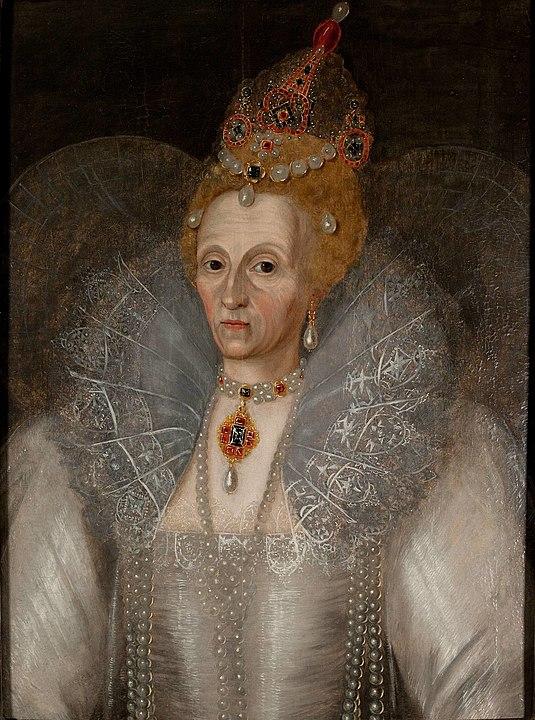
In an attempt to de-escalate the situation, the privy council later in the morning sent four representatives to speak with the earl. Theoretically they were well chosen men, kinsmen and friends of Essex, and the most likely to be acceptable to him: Lord Keeper Egerton, Sir William Knollys, Lord Chief Justice Popham, and the Earl of Worcester. They were not, however, acceptable to the gathered men who greeted them with cries of ‘Kill them! Kill them!’  Cobbett, I, p. 1336. Ushered into a back room, ostensibly for protection and private conversation, they were taken as hostages. The ‘door of that chamber [was] shut fast. And at his going forth out of that chamber, the Lord Keeper pressing again to have spoken with the Earl of Essex, the earl said, “My lords, be patient a while, and stay here, and I will go into London, and take order with the mayor and sheriffs for the city, and will be here again within this half hour.”’
Cobbett, I, p. 1336. Ushered into a back room, ostensibly for protection and private conversation, they were taken as hostages. The ‘door of that chamber [was] shut fast. And at his going forth out of that chamber, the Lord Keeper pressing again to have spoken with the Earl of Essex, the earl said, “My lords, be patient a while, and stay here, and I will go into London, and take order with the mayor and sheriffs for the city, and will be here again within this half hour.”’ Cobbett, I, p. 1342.
Cobbett, I, p. 1342.
With the queen’s representatives taken hostageA person seized or held as security for the fulfilment of a conditionA person seized or held as security for the fulfilment of a conditionA person seized or held as security for the fulfilment of a condition, the men at Essex House were forced to act immediately. Perhaps it was for this reason, or because the palace was forewarned and guarded, that made Essex make the fateful decision to turn right into the City rather than left to Whitehall. As the clocks struck midday, they marched down the Strand, past St Paul’s cathedral, through Gracechurch Street and thence to Fenchurch Street, shouting that Essex’s life was in danger and that ‘England is bought and sold to the Spaniard’.  Cobbett, I, p. 1347. It had little effect: Londoners gawped, they moved aside, a few of them tutted that such a thing should be attempted on a Sunday, but very few took up the call. The motley band’s destination was the house of sheriff Thomas Smythe, whom rumour suggested would be able to provide 1,000 men for their cause, but it quickly became apparent that they had been misinformed. There were no men, there were no weapons. Smythe prevaricated and, as Essex’s men – unsure what else to do – helped themselves to his larder, he slipped away.
Cobbett, I, p. 1347. It had little effect: Londoners gawped, they moved aside, a few of them tutted that such a thing should be attempted on a Sunday, but very few took up the call. The motley band’s destination was the house of sheriff Thomas Smythe, whom rumour suggested would be able to provide 1,000 men for their cause, but it quickly became apparent that they had been misinformed. There were no men, there were no weapons. Smythe prevaricated and, as Essex’s men – unsure what else to do – helped themselves to his larder, he slipped away.
While the members of the rebellion dithered, digested and discussed, the court had been busy. The mayor was summoned from Sunday service and ordered to place the City under a loyal guard. The palace was strengthened against attack. A proclamationA public or official announcement dealing with a matter of great importanceA public or official announcement dealing with a matter of great importanceA public or official announcement dealing with a matter of great importance was written declaring Essex a traitor. It was published across London, deciding many wavering citizens against joining the rising. Despite frantic attempts to silence the heralds, Essex’s followers could no longer truly state that they were acting for the crown. Their excuse that they were acting in personal defence of the earl was now redundant: if they helped him, they were damning themselves. Followers started slipping away and it was a much-reduced group that, at around 3 p.m., decided to return to Essex House.
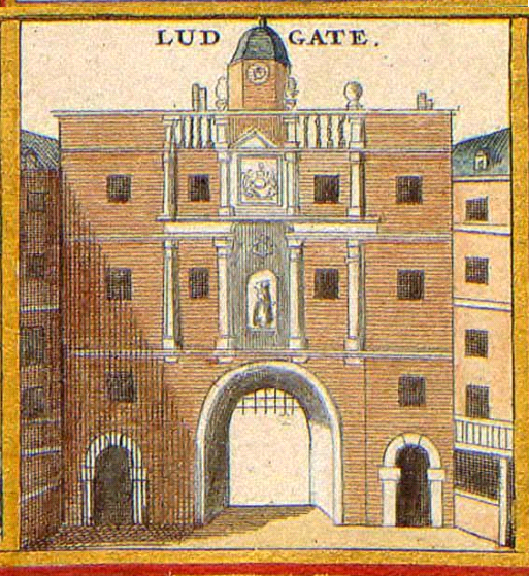
Heading back the way they’d come, they found their route blocked by Sir John Leveson and a company of men at Ludgate. The rebels attempted to bargain, but to no avail. One, impatient with fruitless debate, discharged his pistol. It triggered the inevitable: ‘Now did the Earle first draw his sword. He commanded Blunt to set upon them; which he resolutely performed, running upon Waite … Him he slewe, and was himselfe sore hurt and taken prisoner. There fell Henry Tracy, a young Gentleman whom Essex loved deerely, and one or two Citizens. From hence being repulsed, his hat shot thorow, and very many escaping from him, hee turned aside with a few which would not forsake him…’  William Camden, The History of the Most Renowned and Victorious Princess Elizabeth, 3rd edn (London, 1675), p. 610.
William Camden, The History of the Most Renowned and Victorious Princess Elizabeth, 3rd edn (London, 1675), p. 610.
Leaving Christopher Blount, Essex’s stepfather, injured and dazed on the floor, the remaining 50 or so men fled down Friday Street, hoping to use the river to return to Essex House and the hostages. A chain blocked their way and it looked unlikely they would be able to leave the City by the safety of the river, but sympathetic citizens managed to lift it. They scrambled into boats at Queenhithe, with Lord Mounteagle almost drowning in the process, and finally made their escape.
Under siegeA military operation in which enemy forces surround a town or building, cutting off essential supplies, with the aim of compelling those inside to surrender.A military operation in which enemy forces surround a town or building, cutting off essential supplies, with the aim of compelling those inside to surrender.A military operation in which enemy forces surround a town or building, cutting off essential supplies, with the aim of compelling those inside to surrender.
The dispirited and already defeated group returned to Essex House to find their last bargaining chip, the hostages, had gone. Ferdinando Gorges had slipped away from Essex and returned to the house, claiming that the earl had issued instructions for their release. Those left at the house had trusted him, and stood and watched as he took the four men back to Whitehall. His action, although it saved his life, had condemned his former friends.  Testimony given later shows that Essex had only intended to released Popham, but the Lord Chief Justice demanded the release of them all, and Gorges obliged. With the hostages went the earl’s last hope. With nothing else left to do, the house was fortified – windows were lined with books, papers (perhaps including a damning letter of support and friendship from James VI) were burnt – and the defenders waited.
Testimony given later shows that Essex had only intended to released Popham, but the Lord Chief Justice demanded the release of them all, and Gorges obliged. With the hostages went the earl’s last hope. With nothing else left to do, the house was fortified – windows were lined with books, papers (perhaps including a damning letter of support and friendship from James VI) were burnt – and the defenders waited.
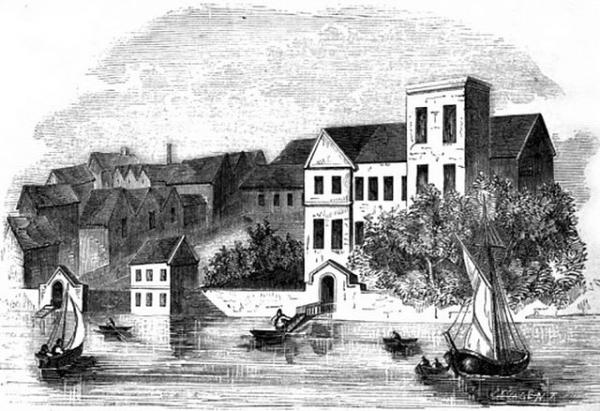
It didn’t take long for the queen’s guards to surround the house, among them those whom Essex believed to be responsible for his mess: Robert Cecil’s brother Thomas Cecil, the new Lord Burghley; the earl of Nottingham; and Lord Grey, who just days before had been released from the Fleet for attacking Essex’s friend, the earl of Southampton. Shots started to be exchanged, rebels started to fall, and a truceAn agreement between enemies to stop fighting for a limited time.An agreement between enemies to stop fighting for a limited time.An agreement between enemies to stop fighting for a limited time. was called to evacuate the ladies from the house. The siege was a foregone conclusion and, when two cannon arrived around 9 p.m., few rebels were left with the stomach to fight. Only Essex and one other wanted a glorious last stand. At 10 p.m. they submitted, on condition of a fair trial. The entire rebellion had lasted less than 12 hours.
An inglorious end
Essex’s followers – those who had been captured in the City as well as at his house – were imprisoned in London’s various gaols, scattered around Newgate, Ludgate, the Marshalsea and the Fleet, as well as the local comptersSmall English prisons used especially for debtors.Small English prisons used especially for debtors. . Essex and Southampton were bound for the Tower, but, thanks to the treacherous tides and the dangers of ‘shooting’ London Bridge, spent the early part of the night at Lambeth Palace: their guards could not run the risk of Londoners finally rallying around the popular earl. The old London Bridge stood on piers that were exceptionally close together, and over a tidal river. Although at times it had been considered a thrill to shoot through the bridge, riding the tide (and unable to use oars), it was also extremely dangerous: many boats were destroyed or severely damaged by smashing against the supports.
The old London Bridge stood on piers that were exceptionally close together, and over a tidal river. Although at times it had been considered a thrill to shoot through the bridge, riding the tide (and unable to use oars), it was also extremely dangerous: many boats were destroyed or severely damaged by smashing against the supports.
Essex and his followers were tried over the following two months, but the verdicts were never in doubt. Even though they claimed they rose with the best intentions – that they never meant to hurt the queen – their actions were treasonous: they had taken up arms against her, they had sought to overthrow her government, and to impose their will on hers. Despite this, the queen showed a great deal of clemencyShowing forgiveness and mercy in the act of judging punishment.Showing forgiveness and mercy in the act of judging punishment.Showing forgiveness and mercy in the act of judging punishment.. Essex, of course, had to die: he had caused too many problems over too long a period, and had the unhappy knack of attracting support. He was beheaded in the courtyard of the Tower on 25 February 1601, having implicated a great many more in the plot.  This was, perhaps, not entirely his fault. Fearful in particular of the implications for Ireland, the privy council sent one of his chaplains, Abdias Assheton, to interrogate him. Concerned about his immortal soul, he confessed all, even his sister’s involvement in the conspiracy. Four others, including Christopher Blount, were hanged or beheaded the following month. Many more remained in prison: Southampton’s death sentence was commuted to life imprisonment, and he was only released on the accessionThe attainment or acquisition of a position of rank or power, often related to the throne.The attainment or acquisition of a position of rank or power, often related to the throne. The attainment or acquisition of a position of rank or power, often related to the throne. of James I. Others paid for their freedom: for 3,000 and 4,000 marks respectively, Francis Tresham and Robert Catesby were free, to become infamous in another plot against the crown just a few years later: the Gunpowder Plot.
This was, perhaps, not entirely his fault. Fearful in particular of the implications for Ireland, the privy council sent one of his chaplains, Abdias Assheton, to interrogate him. Concerned about his immortal soul, he confessed all, even his sister’s involvement in the conspiracy. Four others, including Christopher Blount, were hanged or beheaded the following month. Many more remained in prison: Southampton’s death sentence was commuted to life imprisonment, and he was only released on the accessionThe attainment or acquisition of a position of rank or power, often related to the throne.The attainment or acquisition of a position of rank or power, often related to the throne. The attainment or acquisition of a position of rank or power, often related to the throne. of James I. Others paid for their freedom: for 3,000 and 4,000 marks respectively, Francis Tresham and Robert Catesby were free, to become infamous in another plot against the crown just a few years later: the Gunpowder Plot.
The earl of Essex perhaps genuinely meant no harm: his mind was too warped with grandiose ideas of himself to realise that what was the best for him was not necessarily the best for the state. More than that, his inflated notions of his own importance in reality had very little bearing, by 1601, on the political life of the country. Rather than a clique of enemies at court, his nemesis was his own ego. It left him dissatisfied with the quiet life and pushed him into positions that were, ultimately, untenable. He strove to be the conquering hero of an earlier time, to lead England and its new monarchA king, queen, or emperor into a new golden age, and he drew others to him who wished for the romanticCharacterised by expressions of love; or an idealised way of looking at something; or someone who followed the Romantic artistic movement, that focused on individualism and emotion.Characterised by expressions of love; or an idealised way of looking at something; or someone who followed the Romantic artistic movement, that focused on individualismThe idea or practice of being self-reliant and individual; a sense of self; or favouring freedom of action for individuals over the dictates of a group or state. and emotion. Characterised by expressions of love; or an idealised way of looking at something; or someone who followed the RomanticCharacterised by expressions of love; or an idealised way of looking at something; or someone who followed the Romantic artistic movement, that focused on individualism and emotion. artistic movement, that focused on individualismThe idea or practice of being self-reliant and individual; a sense of self; or favouring freedom of action for individuals over the dictates of a group or state. and emotion. chivalryA knightly code of correct social, religious and moral behaviour.A knightly code of correct social, religious and moral behaviour.A knightly code of correct social, religious and moral behaviour. that he promised. But even though he didn’t see his vision as revolutionary, there were those in his entourage who did seek significant and permanent change, and they would try once again to effect it on 5 November 1605.
Things to think about
- Was the Rising destined to fail; is there any way it could have succeeded?
- Did Essex genuinely have enemies in the privy council, and why was this the case?
- Is Elizabeth at all to blame for the disaster?
- Was Essex right to protect his interests in the way he did?
- Was the Rising treasonous?
- Why are so many of the Gunpowder Plotters connected to the Essex Rising?
- What do the punishments of Essex and his followers say about justice in late Elizabethan England?
Things to do
- Although London is unrecognisable from Essex's day, it is still possible to trace the route he took from his home on the Strand to Gracechurch Street and back. Walk it yourself and, if you're feeling energetic, walk in the opposite direction to Whitehall. Which would have been the most sensible choice for Essex and his followers: Whitehall or the City?
- Many of the primary sources reporting the rebellion and trial are available online. Try looking at Cobbett’s complete collection of state trials (vol. i) or Birch Memoirs of the Reign of Queen Elizabeth.... To get a better idea of Essex's character, try reading his Apologie.
- Visit the Tower of London to see where Essex was held during his last days, as well as the site of his execution.
Further reading
Few popular histories concentrate solely on the Earl of Essex. One of the best, though now dated, is Robert Lacey's biography. There are more academic books, with the price tags to match, on the earl: try Janet Dickinson's Court Politics and the Earl of Essex or Alexandra Gajda's The Earl of Essex and Late Elizabethan Political Culture.
Although not focusing on Essex alone, some interesting discussion can be found in broader books such as Susan Doran's Elizabeth I and her Circle and John Guy, Elizabeth: The Forgotten Years.
Title image: Robert Devereux, 2nd Earl of Essex, after Marcus Gheeraerts the Younger, held by the National Portrait Gallery.
- Log in to post comments

